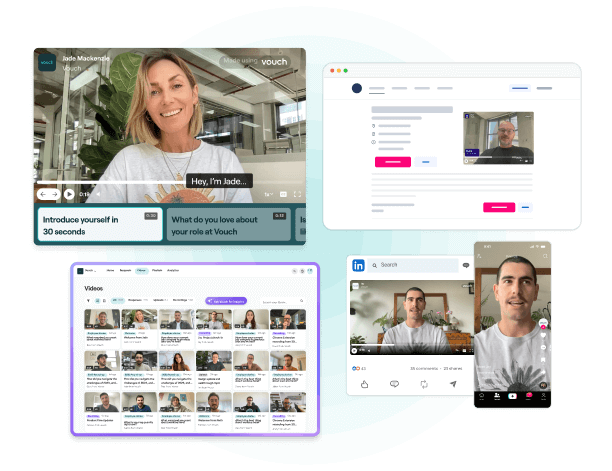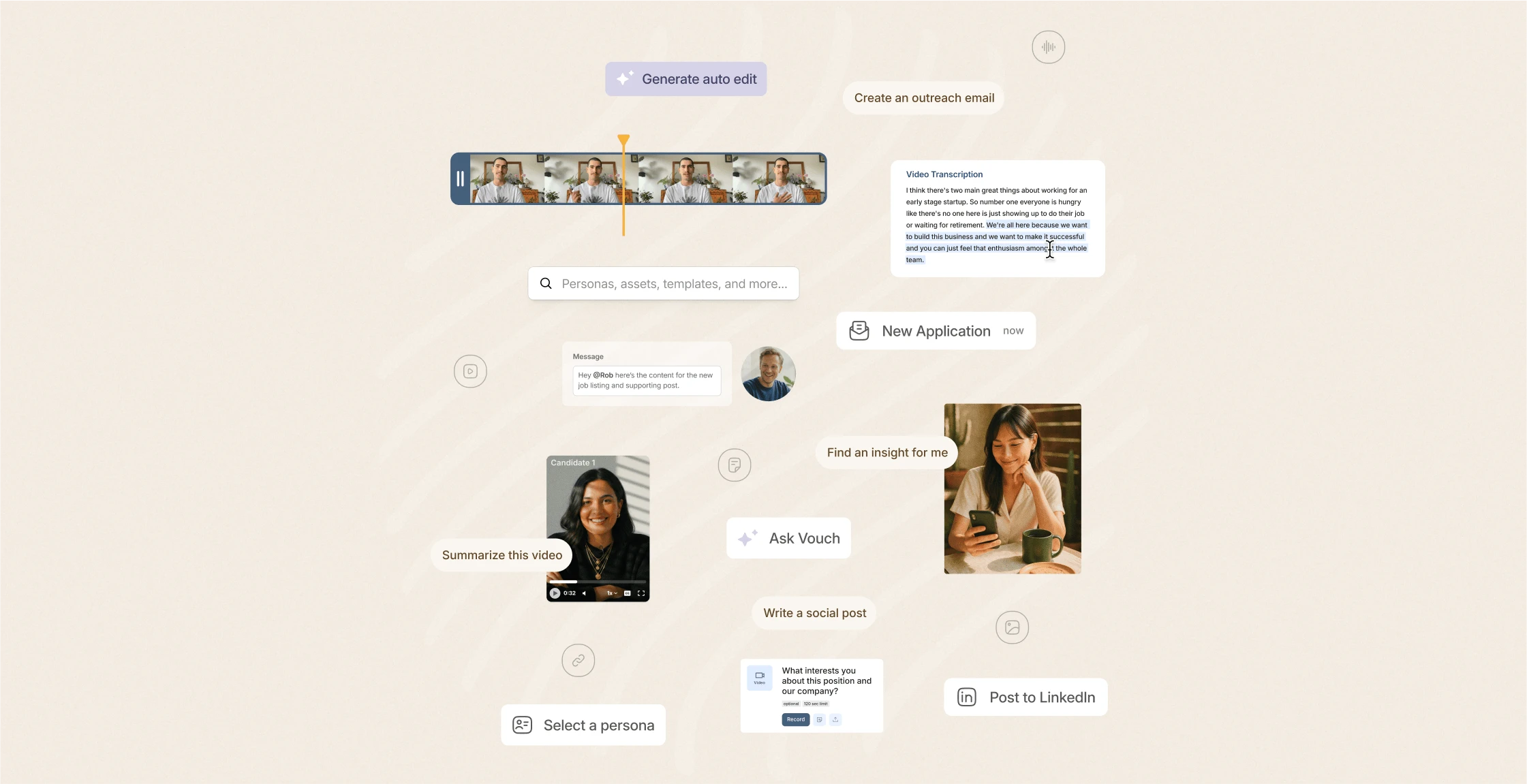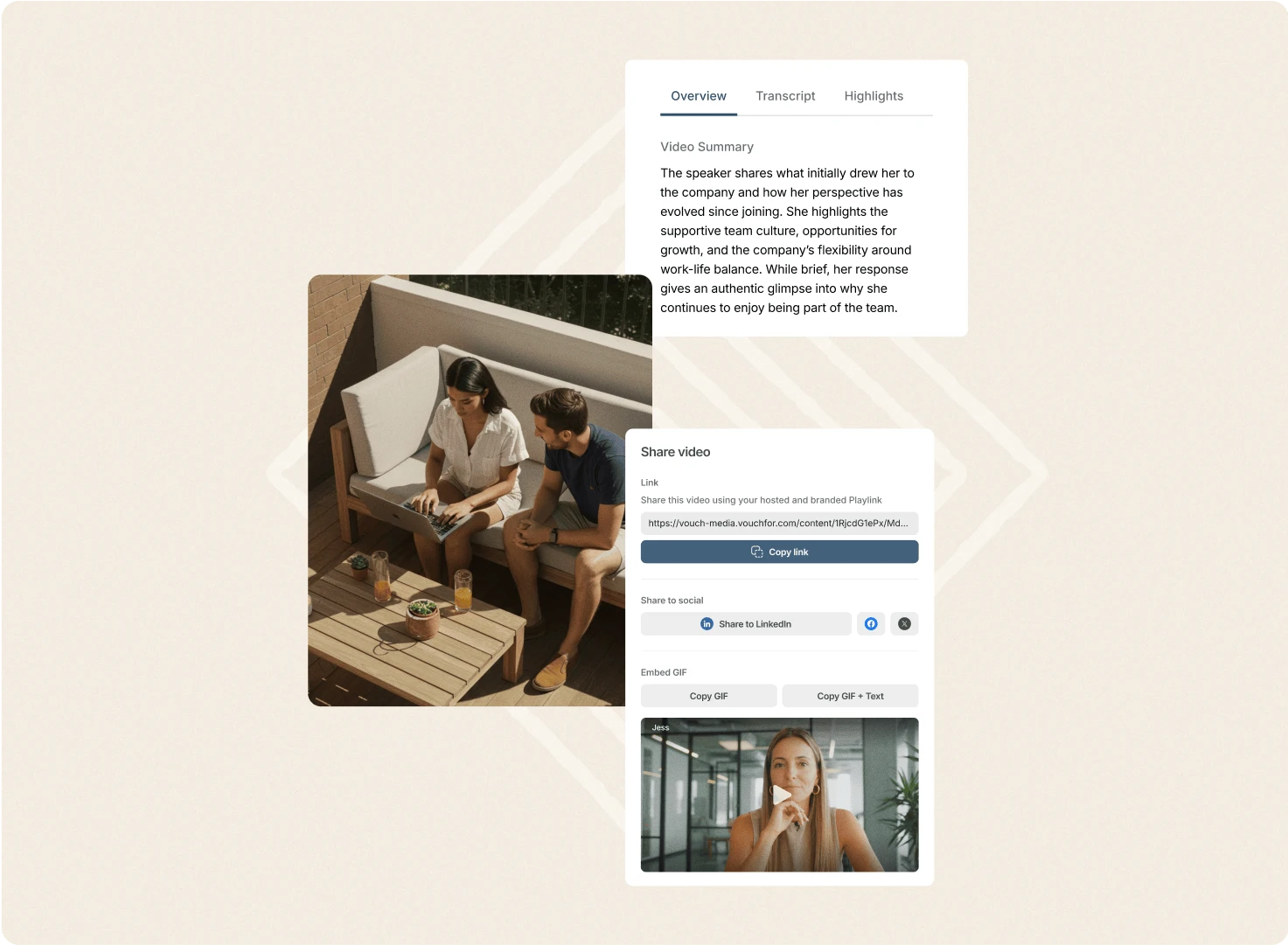In 2025, employer branding is no longer about “nice-to-have” - it’s a critical investment with direct impact on recruiting metrics, employee retention, and even revenue.
But many HR leaders still struggle with the same question: How do we prove the ROI of our employer branding, with real data?
This guide breaks it down using real-world numbers, industry benchmarks, and a clear framework to connect employer branding activities to measurable business results.
Let's get started:
1. Why Employer Branding ROI Matters Now More Than Ever
Hiring costs are rising, retention is harder, and competition for talent is global.
Consider this:
- The average cost per hire in the U.S. is now $4,700 (SHRM, 2023), and up to $28,000 for senior roles (Glassdoor, 2024).
- Turnover costs companies 33% of an employee's salary on average (Work Institute).
- Companies with a strong employer brand see 50% more qualified applicants, 28% lower turnover, and 1-2x faster hiring (LinkedIn Employer Brand Stats).
The simple truth: if your employer brand attracts higher quality talent, reduces your time to hire or improves offer acceptance rate, you’re saving (and making) real money for your company with just these few easy measurements.
2. Metrics That Matter: How to Measure Employer Brand ROI
A meaningful ROI framework depends on tracking what actually moves the needle.
Here's how HR and talent leaders should structure their measurement efforts:
Core ROI Metrics
- Time to Hire – Reduction = faster productivity & less vacancy cost
- Cost per Hire – Lower costs via organic traffic and referrals
- Offer Acceptance Rate – Higher rates = less renegotiation and fallback hiring
- Quality of Hire – Tracked via performance, retention, and promotion rates
- Retention Rate – A sticky culture reduces churn and knowledge loss
- Career Site Traffic & Engagement – Strong indicators of top-of-funnel health
Advanced Attribution Metrics
- Source Attribution – What channel brings the highest quality applicants?
- Referral Hire Success – How do employee-referred hires perform?
- Brand Sentiment & Perception – Via Glassdoor, social listening, and surveys
- Application Completion Rate – Optimizing your employer brand UX
Tool Tip: Platforms like Link Humans’ Employer Brand Index help benchmark brand performance using data from 16+ online sources.
Bring your employer brand to life
- Empower employees’ storytelling
- Transform careers sites with video
- AI-driven video editing
- Publish videos anywhere

3. What’s the Real Cost of a Weak Employer Brand?
If leadership needs a wake-up call, these stats hit hard:
- Companies with a poor reputation pay 10% more per hire (Harvard Business Review).
- 69% of job seekers wouldn’t take a job with a company that has a bad reputation - even if unemployed (Glassdoor, 2023).
- On average, every day a role goes unfilled costs $500 to $1,000 in lost productivity, depending on the position (SHRM).
Multiply that by your number of vacant positions, and your leadership will start paying attention.
4. How to Build a Business Case with ROI
Here’s a simple example of how you can connect branding improvements to financial return.
Let’s say your company hires 200 people annually, with an average cost per hire of $6,000.
By improving your employer brand through consistent messaging, content, and employee engagement, you reduce this cost by 15%.
Savings:
200 hires x $6,000 = $1.2 million
15% reduction = $180,000 saved annually
Now add reduced time-to-fill, improved retention, and fewer lost candidates due to brand reputation. The ROI multiplies.
Tip: Use the Employer Brand ROI calculator from Universum to create your own scenario.
5. Attribution Framework: Connecting Brand to Outcome
Your employer brand isn’t one campaign - it’s the sum of all candidate and employee interactions.
But that doesn’t mean it can’t all be tracked in a fair manner.
Use a funnel-based approach to connect brand to hires:
Top Funnel (Attraction & Awareness)
- Measure career site visits
- Measure social engagement
- Measure Employer review trends such as Glassdoor rating changes
- Measure EVP content performance and employer branding engagement, native in tools like Vouch
Mid Funnel (Consideration & Application)
- Conversion rates from employer videos/content
- Application rate per job view
- Engagement with employee stories and video testimonials
Bottom Funnel (Decision & Retention)
- Offer acceptance rate
- New hire satisfaction with 30/90 day surveys
- First-year retention
Track funnel metrics over time. If your brand efforts go up across content, reviews, social visibility etc, and applications and quality hires rise in sync, you’ve got attribution.
6. Where Vouch Fits: Brand Activation with Real Employee Stories
Once your strategy is data-driven, you need tools that create measurable impact.
That’s where Vouch comes in.
Why Vouch Matters for ROI:
- Companies using Vouch report higher candidate trust and engagement
- Video testimonials lead to a 34% increase in application conversions ([internal customer data, Vouch])
- Used by leading brands like Canva, HubSpot, Culture Amp, and more (see all)
By capturing authentic employee stories, Vouch helps you:
- Improve offer acceptance rate and help candidates feel more connected
- Build a stronger employer value proposition with real voices
- Boost career site engagement and application completion rates
Use Vouch across:
- Careers pages
- Social media
- Internal comms
- Recruitment marketing campaigns
7. Use Exit Interviews and Internal Surveys to Close the Loop
Don’t wait for Glassdoor to tell you what’s wrong.
Start measuring internally:
- Exit Interviews: Why are people really leaving?
- Employee Surveys and spotlight videos: What do they believe about your EVP?
- Candidate Feedback: What worked, and what didn’t during the recruitment process?
Use tools like Culture Amp, Peakon, or even Google Forms to collect consistent feedback and convert it into recruitment marketing insights.
8. Make Employer Brand Part of C-Suite Strategy
Too often, employer branding is seen as a “HR problem.” In 2025, it’s a business imperative.
Here’s how to align it:
- Share monthly or quarterly branding KPIs with leadership
- Tie employer brand goals to human capital ROI and economic indicators
- Use external benchmarks: Great Place to Work lists, Glassdoor reviews, Edelman Trust Barometer
Who Are The Top 10 Global Employers Winning at Employer Branding?
- Salesforce – Leader in inclusive culture and EVP
~72,000 employees | $34B revenue
salesforce.com - Google (Alphabet) – Powerful brand visibility and internal advocacy
~182,000 employees | $320B revenue
about.google - HubSpot – Strong internal culture, transparency, and remote-first approach
~7,400 employees | $2B revenue
hubspot.com - Microsoft – Industry leader in diversity, inclusion, and employee storytelling
~221,000 employees | $232B revenue
microsoft.com - Canva – High-growth company known for employee engagement and branding
~3,500 employees | Private
canva.com - Cisco – Consistently ranked high in culture, employee advocacy, and DEI
~84,000 employees | $52B revenue
cisco.com - LinkedIn – Thought leader in talent marketing and employer brand innovation
~21,000 employees | Microsoft-owned
linkedin.com - SAP – Great EVP alignment and internal brand adoption
~111,000 employees | $32B revenue
sap.com - Adobe – Known for internal mobility, brand personality, and retention
~29,000 employees | $20B revenue
adobe.com - Culture Amp – Experts in employee experience, surveys, and brand health
~1,000 employees | Private
cultureamp.com
FAQs
What’s the fastest way to prove ROI in employer branding?
Track improvements in time to hire, cost per hire, and offer acceptance rate before and after launching your employer branding campaigns.
How often should we measure brand impact?
At minimum, quarterly, with consistent tracking across all recruitment funnel metrics.
How can we link employer branding to revenue?
Estimate revenue per employee, cost of unfilled roles, and employee turnover - then tie branding efforts to improvements in those areas.
What tools help measure employer brand?
Vouch for video engagement, Link Humans for brand index, Google Analytics for your career page/site, and more.
How do we report branding success to leadership?
Use clear metrics: reduced cost/time per hire, higher candidate NPS, improved retention. Avoid vague language, show the numbers.
What’s the role of social media in employer branding ROI?
It helps increase employer brand visibility and candidate engagement - track CTRs, follows, and conversions from campaigns.
Should employer brand efforts focus more on attraction or retention?
Both, brand consistency across the candidate and employee journey improves retention and recruiting outcomes.
See Why Employer Brand Managers Love Vouch!
Loved by companies like Warner Bros. Discovery, Canva, Nike, Cisco, HubSpot, Amazon, and more, tools like Vouch make leveraging employer branding strategies in your business remarkably easy.
Book a Vouch demo today and chat with an employer branding expert about your business needs.
You might also like

Elevate Your Brand Today With Vouch
Discover how Vouch can accelerate talent acquisition while helping you stay on-brand.






